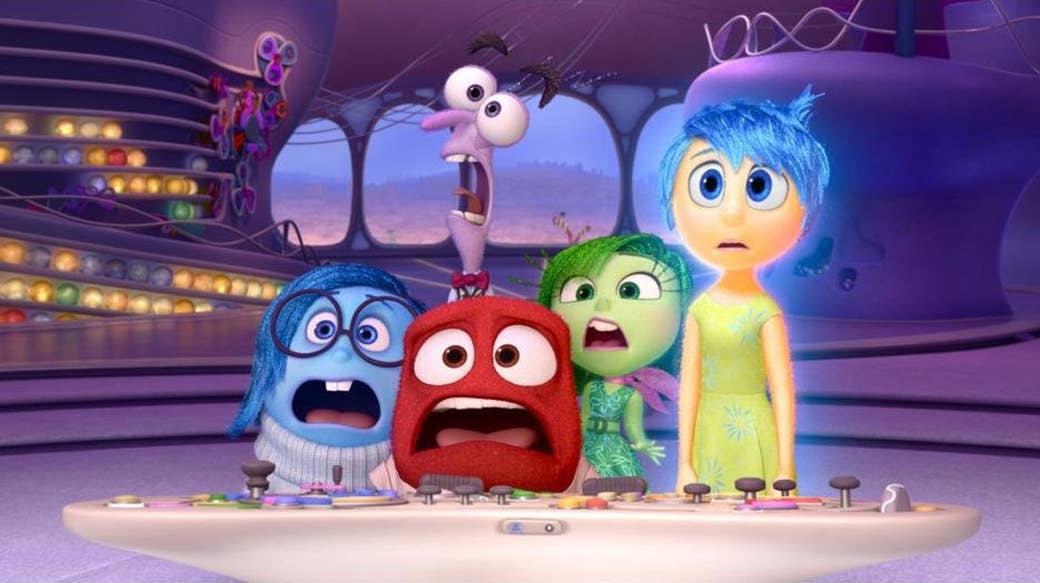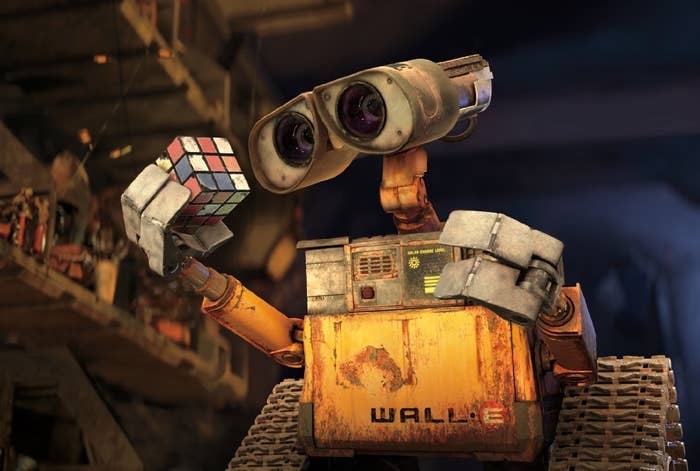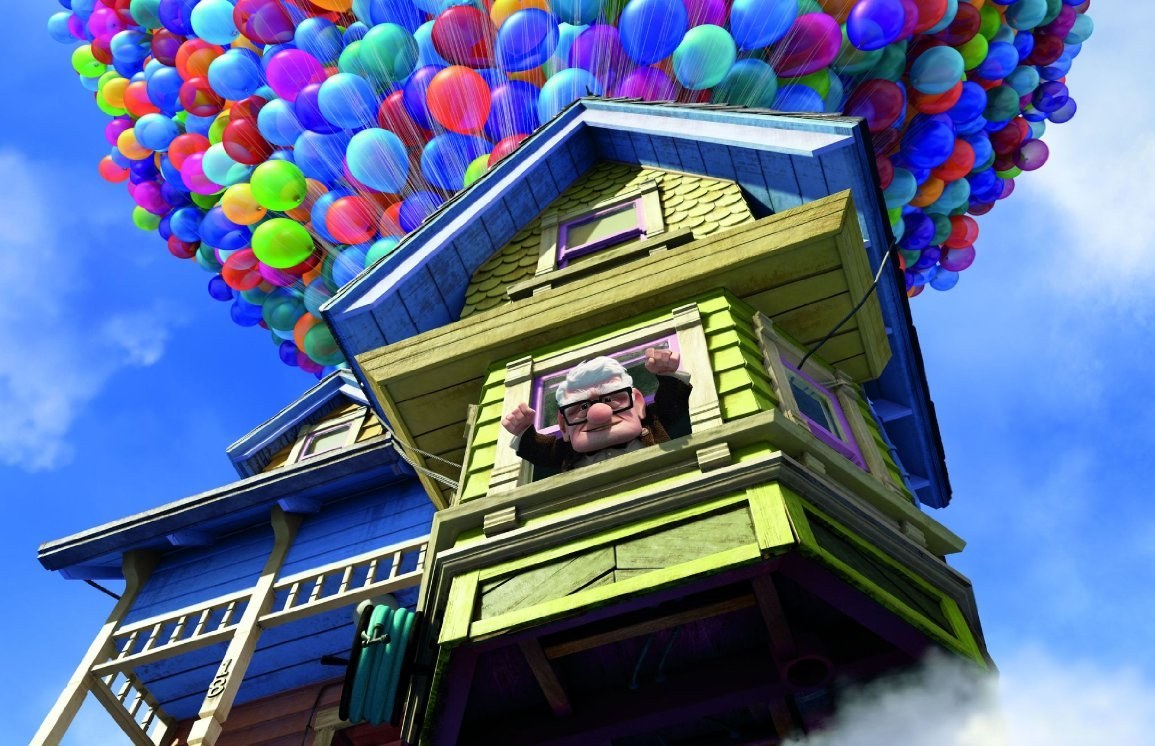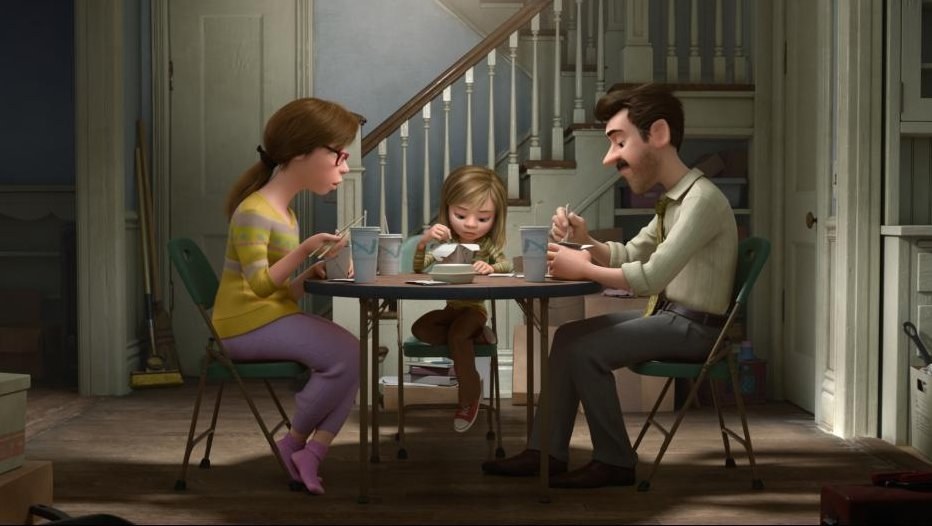
Inside Out prompts tears with the effortlessness of someone flicking on a faucet. It has a painstakingly endearing voice cast led by Amy Poehler and Phyllis Smith, with Richard Kind in a scene-stealing role as outgrown imaginary best friend Bing Bong. It offers up an intricately visualized internal landscape in which a little girl's memories are stored as colored globes, essentially becoming the pixels that form a larger portrait of a childhood. It's capable of charming kids and winning over grown-ups with equal ease.
It is, you know, a Pixar movie.
It's actually the best Pixar movie in a few years, a return to form after a few features that ranged from forgettable to fine but were nothing close to the stratospheric standards the Emeryville-based animation company has set for itself. Inside Out attests to what Pixar is capable of at its collaborative corporate genius best — it's a movie that feels warmly universal without pandering or condescension. It uses a high concept, that five anthropomorphized emotions in the mind of a girl named Riley work together (or don't) to guide her through her day, to explore complex ideas about accepting sadness and loss as a part of life. And more importantly, it's weird.

Weirdness has always been Pixar's unsung gift. No slight intended to the company's Velveteen Rabbit-esque signature trilogy Toy Story, or the boogeyman script-flipping Monsters, Inc., or the superhero revamping The Incredibles, but the company's most unlikely creations have always been its most thrilling. Pixar has been able to make children's films based on concepts that, in abstract, seem insane — robots falling in love on the abandoned, garbage-filled wreck of planet Earth, or an elderly man setting off on a suicidal mission to finish plans that were never fulfilled during the decades-spanning montage summing up his marriage.
Pixar isn't a stranger to the fairy tales and talking animals to which other animations giants tend to stick, though films like Brave, Finding Nemo, and Ratatouille all do different degrees of expectation defying. But Inside Out, which was directed by Pete Docter (of Up and Monsters, Inc.) has an enchantingly off-the-map quality (even if its setup echoes that of the '90s sitcom Herman's Head). It's a movie about something very small — the unhappiness an 11-year-old experiences when her family moves from Minnesota to San Francisco, before she settles in and makes new friends — but that manages to be epic in scope, because that's how changes like that feel when you're younger, like the whole world is being destroyed and remade.
Inside Out's opening minutes quickly and deftly lay out the movie's involved cartoon metaphor for a human mind with the appearance of the five main emotions and explanations of their roles (save Sadness — "I'm not actually sure what she does," Joy admits) to the establishing of how memories work, including the core ones that fuel each island of Riley's personality. Once Joy throws Riley's inner workings into chaos by attempting to dispose of a sad core memory, we end up exploring the outskirts of the girl's mind, where clever concepts fly by, fast and furious — the Train of Thought, the abstract chamber, the Subconscious, and the Dream Productions studio.

There are some references no child will grasp, and Inside Out is agreeably secure in the knowledge that it doesn't matter, that understanding can be a gradient, that there are enough bright colors and bits of physicality to keep younger viewers entertained even if they don't immediately appreciate the bit about cell phone numbers or YA-influenced fantasy boyfriends. The mental obstacle course Joy and Sadness have to navigate to get back to Headquarters is the most conventional part of the movie, but the characters' journey through it carries the movie to some sophisticated realizations about how growing up means leaving things behind and learning that no one is or should be happy all the time.
Pixar has smuggled these themes into other movies. The Toy Story films deal with obsolescence from the POV of the object at risk of being discarded, while Finding Nemo has a father learning to loosen the reins on his son and to accept he can't be sheltered forever. But Inside Out overtly dramatizes these ideas, giving them form in the relentlessly peppy Joy, the doleful Sadness, and their companions. It basks in the bittersweetness of change — which may be its weirdest, boldest aspect.
Inside Out is being lauded for having the biggest opening weekend at the box office for an original movie in Hollywood history — though it still came in second place to Jurassic World. And certainly during a summer in which reboots, sequels, and adaptations rule the day, Pixar's success is a rarity, one it will be following with another original story, The Good Dinosaur, due out at the end of the year. Touting originality can start to sound like lip service when audiences clearly relish movies that continue or reimagine familiar properties, and when daring ones like Mad Max: Fury Road can feel ferociously new even within the confines of a 36-year-old franchise.

But Inside Out's originality, and yes, its accompanying weirdness, deserves an honest salute for being shaped by its own goals rather than an idea of audience desires — which is what's powering our current remake culture, in which every vaguely recognizable scrap of intellectual property is being gobbled up as a potential source of some new series or movie. Hollywood has been using the familiar as a launching pad, and it's been paying off, which is why we're seeing more and more of it. Inside Out stands in the midst of all that, unapologetically ambitious and blithely unconcerned with couching itself in the familiar or the expected — like WALL-E, like Up, it is a reminder that appealing, touching stories can be found in very unexpected places, that they don't have to be engineered around what viewers already know.
Of course, it always helps to have a Pixar-level reputation and the Disney marketing machine at your back — and even Pixar bows to industry trends. Due out in 2016 is Finding Dory, with Finding Nemo director Andrew Stanton back at the helm.
